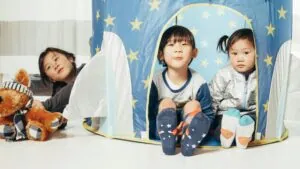Table of Contents
Traveling the World with All Your Senses
The world is a vast and wondrous place, filled with captivating landscapes, vibrant cultures, and unforgettable experiences. However, for many people with disabilities, traditional tourism can present significant barriers. As a result, this is where accessible tourism, also known as inclusive tourism or barrier-free tourism, comes in. In fact, a recent BBC news article revealed that disabled travellers are a signifiant untapped market. So, are you ready to welcome them?
What is Accessible Tourism?
Accessible tourism goes beyond physical accessibility, like ramps and accessible toilets. Moreover, it’s about creating inclusive environments that cater to the diverse needs of travelers, regardless of their abilities. For example, this includes people with:
- Physical disabilities: Mobility impairments, vision or hearing loss, dexterity limitations.
- Cognitive disabilities: Learning disabilities, intellectual disabilities, for example.
- Hidden disabilities: Conditions like chronic pain, anxiety, or neurological disorders.
- Sensory differences: Variations in how people perceive sensory information, affecting their comfort and enjoyment. Difficulty processing sensory information, such as loud noises, bright lights, or strong smells.
Importantly, by understanding and addressing these diverse needs, we can create truly welcoming and accessible tourism experiences for everyone.

The Importance of Accessibility in Travel
Accessible tourism is not just a moral imperative, it’s also a smart business decision. Here’s why:
- Expands your market: Reaches a wider audience, boosting revenue and brand reputation.
- Enhances customer satisfaction: Creates positive experiences for everyone, leading to word-of-mouth marketing.
- Improves employee morale: Fosters a culture of inclusivity and attracts a diverse workforce.
- Contributes to social good: Creates a more welcoming and equitable society for all.
Types of Accessibility in Tourism
In fact, accessible tourism encompasses various aspects of the travel experience:
-
Physical accessibility:
- Wheelchair-accessible ramps, elevators, and bathrooms.
- Accessible transportation options, like buses with ramps and lowered floors.
- Braille signage, tactile maps, and audio descriptions for exhibits.
-
Sensory accessibility:
- Reduced noise levels and designated quiet areas.
- Adjustable lighting and low-sensory environments.
- Clear signage and communication, avoiding complex language.
-
Cognitive accessibility:
- Simple and clear instructions and information.
- Assistive technologies, like screen readers and magnification software.
- Staff training on disabilities and communication strategies.

Some Examples of Accessible Tourism
Let’s see how accessibility can be implemented across various tourism sectors:
- Accommodation: Accessible rooms with wider doorways, roll-in showers, and grab bars. In addition, sensory-friendly rooms with adjustable lighting and noise-canceling, sound reducing features.
- Transportation: Accessible airplanes, trains, and buses. For instance, with clear and concise travel information shared in mutliple ways, in advance.
- Attractions: Accessible entrances, exhibits, and restrooms. As an example, including tactile displays and audio guides for museums. Furthermore, having designated quiet spaces in theme parks.
- Restaurants: Accessible seating and restrooms. In addition, providing clear and easy-to-read menus with allergen information.
Empowering Travelers with Sensory Differences or Disorders
Sensory sensitivity and sensory overload can significantly impact travel experiences. People with autism, for example, may experience discomfort in crowded or noisy environments. As a result, by considering the eight senses – sight, hearing, touch, taste, smell, proprioception (body awareness and movement), vestibular (balance), and interoception (internal body sensations) – tourism providers can create more inclusive settings. Did you know you have eight senses? Discover more in our blog: You Have Eight Senses Not Five.
10 Actionable Tips for Creating Sensory-Friendly Toursm Experiences
Creating a sensory-friendly environment involves thoughtful planning and implementation for your tourism event or location. For instance, here are ten actionable tips to get you started:
- Set Sensory-Friendly Hours: Dedicate specific times with lower crowds and reduced sensory stimuli.
- Make a Sensory-Friendly Day: For example, designate a day or days of the week with sensory considerations in mind.
- Create a Sensory-Friendly Map: Provide a visual guide highlighting quiet areas, accessible facilities, and potential sensory triggers.
- Offer Sensory Kits: Assemble kits with items like noise-canceling headphones, fidget toys, and sunglasses.
- Loan or Sell Noise-Canceling Headphones: Make them readily available for purchase or rental.
- Designate a Sensory Room: For instance, create a calm, low-sensory space for relaxation and respite.
- Provide Staff Training: Educate employees about sensory sensitivities and how to support guests with these needs.
- Implement a Suggestion Box: Gather feedback from visitors to identify areas for improvement.
- Establish Quiet Zones: Create designated spaces with reduced noise levels.
- Offer Sensory-Friendly Lanyards: Provide optional lanyards for individuals who prefer to discreetly indicate their sensory needs.
Critically, by incorporating these strategies, you create a more welcoming and inclusive environment for people with sensory differences and disorders.

Beyond Sensory Differences and Disorders: Addressing Diverse Needs
Furthermore, it’s important to remember that sensory sensitivity is just one aspect of accessibility. In addtion, people with disabilities face other barriers in the environment. For example:
- Individuals with dementia: May benefit from simplified instructions and familiar routines.
- People with developmental disabilities: May require clear communication and predictable environments.
- Travelers with long-covid: May need access to rest areas and flexible itineraries.
The Benefits of Accessible Tourism for Businesses
Furthermore, investing in accessibility is a win-win situation. Here’s how it benefits your business:
- Increased customer satisfaction: Creates a welcoming environment for everyone.
- Enhanced brand reputation: Positions you as a leader in inclusive tourism.
- Improved employee morale: Fosters a culture of diversity and inclusion.
- Potential for government grants and tax incentives. Looking for funding? Then, we have a blog post for you: Making Inclusion a Reality: Funding Your Sensory-Friendly Transformation

FAQs on Creating Accessible Tourism
How can I make my museum more accessible for visitors with sensory sensitivities?
We’ve got you covered! Check out our blog post, Sensory Friendly Museums: A Guide for Inclusive Experiences, for tips on creating an inclusive museum experience for all.
What steps can I take to make my theme park sensory-friendly?
Making your theme park more sensory-friendly is easier than you think. Explore our blog, Make Your Theme Park Sensory-Friendly for practical strategies to create a welcoming environment for everyone.
How can I adapt transportation terminals like airports and bus stations to be more sensory-friendly?
Learn how to make plane, train, and bus terminals more accommodating with our blog, Make Plane, Train, and Bus Terminals Sensory-Friendly.
What are some tips for creating a sensory-friendly aquarium experience?
Dive into our guide, Tips for a Sensory-Friendly Aquarium, for expert advice on how to make aquariums more accessible for visitors with sensory sensitivities.
How can I create a sensory-friendly zoo experience?
Explore our post, Creating a Sensory Oasis: A Guide to Inclusive Zoos for All, for tips on making your zoo a more inclusive place for all visitors.
Are there any case studies on sensory-friendly art exhibits?
Yes! Discover our case study, Unveiling a World of Art for All: a Case Study to see how art exhibitions can be made accessible to everyone.
How can I make travel more inclusive for everyone?
Check out our comprehensive guide, The Ultimate Guide to Sensory-Friendly Places to Visit, for tips on creating inclusive travel experiences across various locations.
What are some ideas for creating a sensory garden tourist attraction?
Designing a sensory garden can offer a peaceful retreat for visitors. Learn how with our blog, Create a Sensory Garden.
How can I make outdoor sculpture trails more accessible?
Discover tips on creating an inclusive outdoor art experience with our post, Sensory-Friendly Tourism: A Sculpture Trail.
How can tourism operators better accommodate guests with sensory sensitivities or autism?
Tourism operators can accommodate guests with sensory sensitivities by partnering with or recommending hotels that offer sensory-friendly features. Check out our Autism-Friendly HotelYour Guide to Autism-Friendly Hotelss blog for examples and insights
Building an Inclusive Tourism Industry
The future of tourism is inclusive. Moreover, by collaborating with disability advocacy organizations, listening to the advice and stories of people with the lived experience of disability and incorporating accessibility best practices, like the ones we share, we can create a world where everyone can experience the joy of travel with accessible tourism for all!
Remember: Accessible tourism is a journey, not a destination. Therefore, continuous improvement and learning from feedback are essential to creating truly inclusive experiences.
Explore Sensory-Friendly Solutions for Accessible Tourism
Sensory Friendly Solutions offers a range of resources to help you create welcoming and inclusive experiences for all visitors. In addtion, our expertise includes:
- Training: Empower your staff with the knowledge and skills to provide exceptional service to guests with diverse needs: Get Sensory Friendly Training.
- Certification: Showcase your commitment to accessibility and gain recognition for your efforts: Sensory Friendly Solutions Certification.
- Consulting: Develop customized accessibility plans tailored to your specific business: Contact to inquire.
- Product Recognition: Identify and promote sensory-friendly products and services: Recognized Products.
Start with Sensory-Friendly 101
Want to create a more welcoming experience for all guests? Our Sensory-Friendly 101 Course provides the foundation you need to ensure your tourism operation is inclusive for visitors with sensory sensitivities.
Learn More About Our Training Membership
Interested in accessing all of our sensory-friendly courses for one low price? Then, watch this quick video from our founder, Christel Seeberger, to learn how our Training Membership can help you build an inclusive business.
Enhance Performances with Sensory-Friendly Strategies
If performances are part of your tourism operation, our Sensory-Friendly Performances Course will guide you through adapting shows and events to ensure all guests, including those with sensory needs, can enjoy them.
Create Inclusive Swimming Experiences
Do you have a pool as part of your tourism offerings? Our Sensory-Friendly Swimming Course is designed to help you adapt aquatic environments for guests with sensory sensitivities, making your pool inclusive and welcoming.
Top Blogs for Businesses
Looking for expert tips to make your business more inclusive? Explore our top 3 blog posts for businesses and learn practical strategies to improve accessibility and sensory inclusion.
Stay Informed with Our Latest Posts
Get the latest insights on sensory-friendly practices! Check out our most recent blog posts to stay up to date on how to create more inclusive spaces.
Join Our Newsletter
Don’t miss out on exclusive updates, tips, and resources! Subscribe to our newsletter to get expert insights and the latest on sensory-friendly solutions delivered straight to your inbox.











